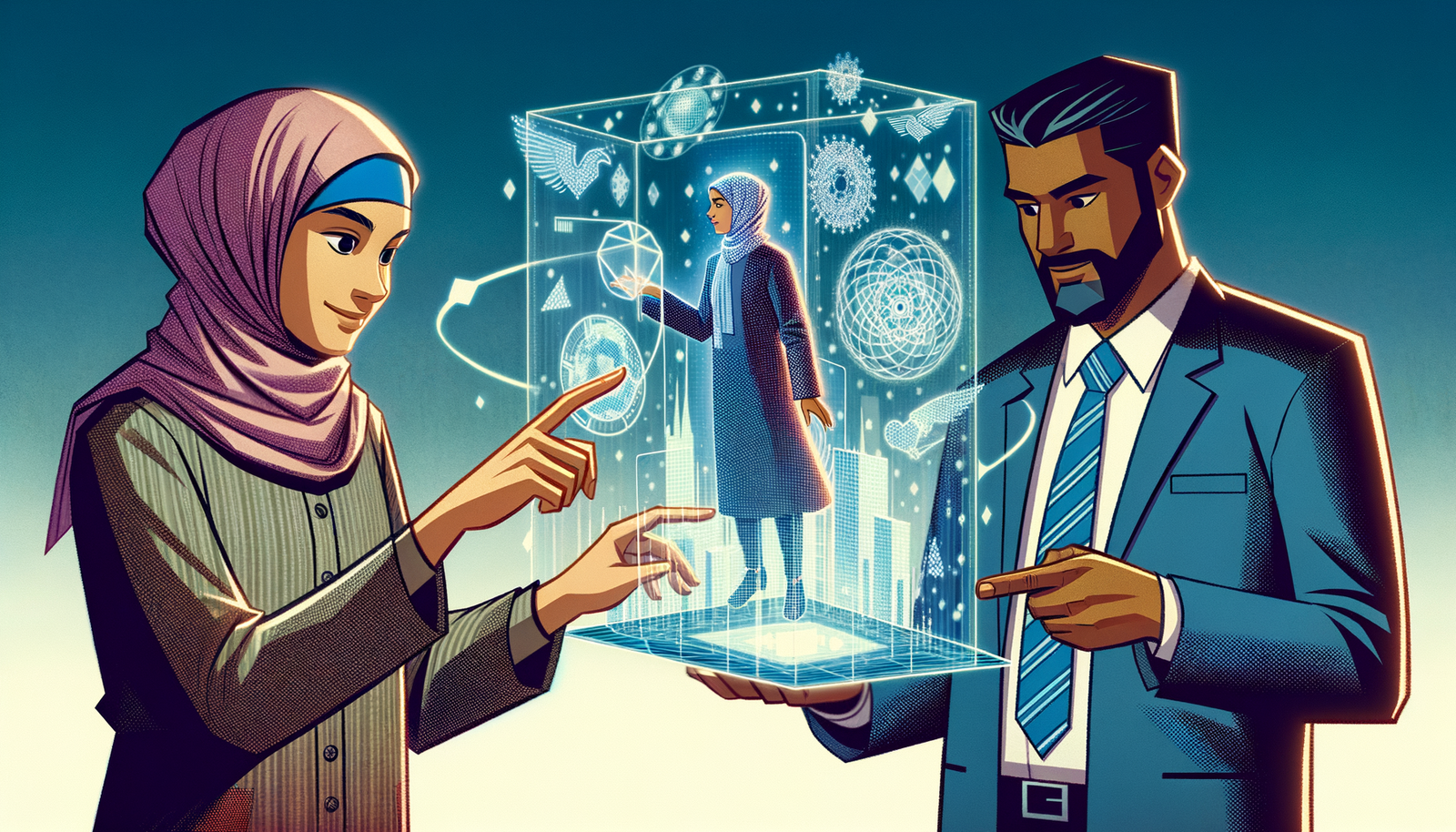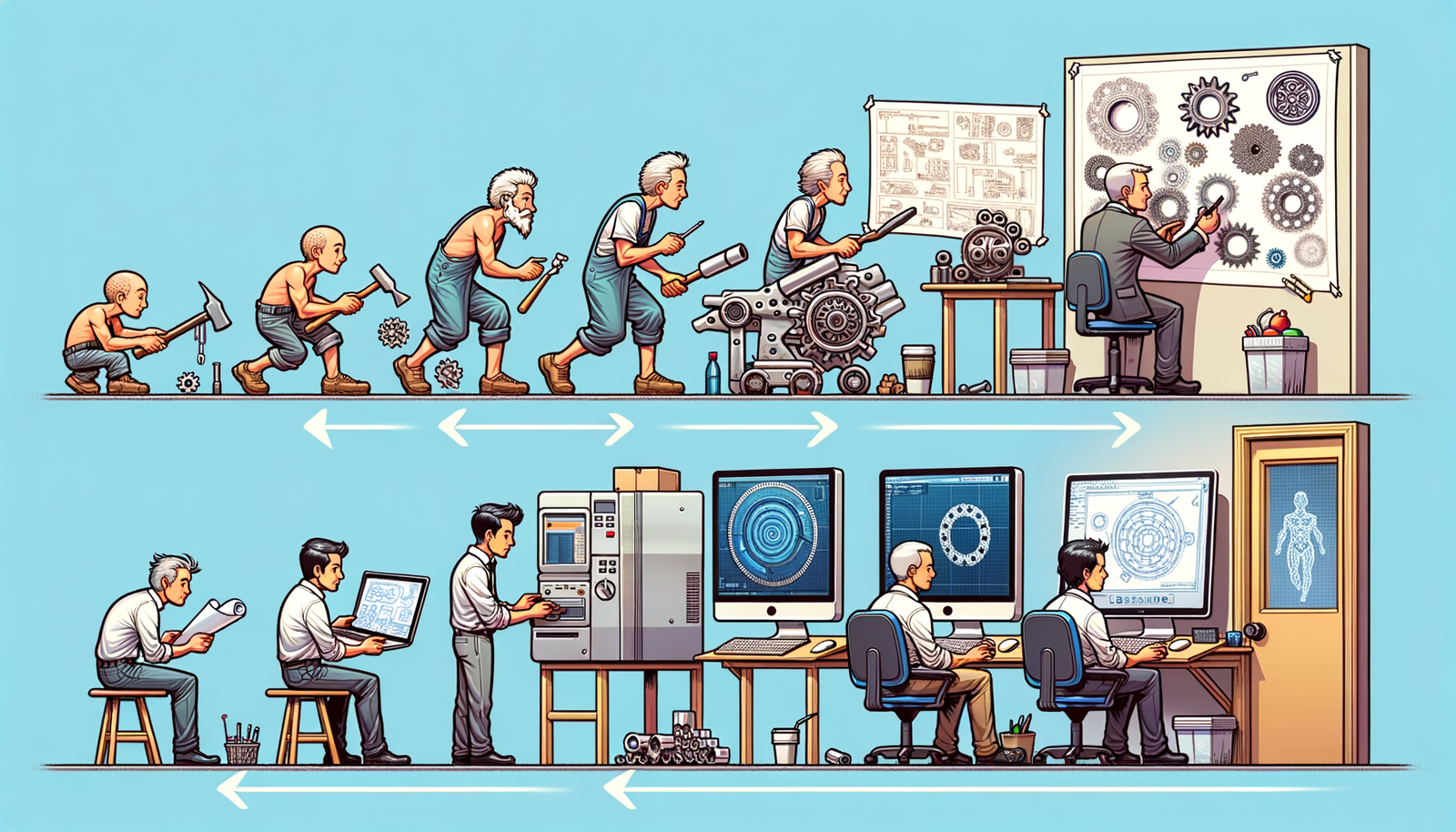Your Cart is Empty
Customer Testimonials
-
"Great customer service. The folks at Novedge were super helpful in navigating a somewhat complicated order including software upgrades and serial numbers in various stages of inactivity. They were friendly and helpful throughout the process.."
Ruben Ruckmark
"Quick & very helpful. We have been using Novedge for years and are very happy with their quick service when we need to make a purchase and excellent support resolving any issues."
Will Woodson
"Scott is the best. He reminds me about subscriptions dates, guides me in the correct direction for updates. He always responds promptly to me. He is literally the reason I continue to work with Novedge and will do so in the future."
Edward Mchugh
"Calvin Lok is “the man”. After my purchase of Sketchup 2021, he called me and provided step-by-step instructions to ease me through difficulties I was having with the setup of my new software."
Mike Borzage
Harnessing Holographic Technology for Revolutionary Design Visualization and Interaction
November 25, 2024 4 min read


Introduction to Holographic Technology in Design
Holographic technology has rapidly evolved over the past few decades, transitioning from science fiction to practical applications within various industries. At its core, holography involves the creation of three-dimensional images, known as holograms, which are formed by the interference of light beams from a laser or other coherent light source. These holograms offer a depth and realism unattainable by traditional two-dimensional images, making them invaluable in fields where visualization is paramount. In the realm of design, visualization serves as a critical component, allowing designers, stakeholders, and clients to perceive and assess concepts effectively. The ability to visualize designs immersively enhances communication, reduces misunderstandings, and accelerates decision-making processes. As the demand for more engaging and interactive experiences grows, the integration of holographic technology in design visualization emerges as a transformative approach, offering immersive experiences that bridge the gap between conceptualization and realization.
Applications of Holographic Technology in Design Visualization
The integration of holographic technology into design visualization has opened new horizons across various sectors. In architectural design, holography enables architects and clients to visualize buildings in a three-dimensional space before construction begins. This capability allows for a more comprehensive understanding of spatial relationships, aesthetics, and functional aspects of structures. By leveraging 3D holograms in client presentations, architects can enhance engagement and provide a tangible sense of the proposed building, leading to more informed feedback and satisfaction. In product design and development, holographic displays facilitate prototyping and iterative design processes. Designers can interact with virtual prototypes, making real-time adjustments without the need for physical models. This not only accelerates the development cycle but also reduces costs associated with traditional prototyping. Collaborative product reviews become more dynamic, as team members can engage with holographic representations, providing immediate feedback and fostering a more cohesive development environment. In the realm of education and training, holography serves as a powerful tool for teaching complex design concepts. Students and trainees can participate in virtual workshops, experiencing hands-on learning in a controlled environment. This immersive approach enhances comprehension and retention, preparing learners for real-world applications by bridging theoretical knowledge with practical experience.
Technical Considerations and Challenges
While holographic technology offers remarkable benefits, its implementation in design visualization comes with technical considerations and challenges. The technologies enabling holographic displays, such as light field technology and spatial light modulators, require sophisticated hardware and software integrations. Light field technology captures and displays light in a way that replicates how humans perceive the physical world, creating highly realistic holograms. Spatial light modulators manipulate light waves to form holographic images, necessitating precise control and calibration. Current hardware requirements often involve high-performance computing systems capable of processing complex algorithms in real-time. Software platforms must be robust, offering compatibility with existing design tools and workflows. One of the significant challenges lies in integrating holographic systems with traditional design software, which may not be inherently compatible with three-dimensional holographic outputs. Limitations of holographic technology include cost considerations, as the advanced equipment and software can be expensive to acquire and maintain. Additionally, user adoption may face resistance due to the learning curve associated with new tools and the disruption of established workflows. Overcoming these challenges requires strategic planning, investment in training, and a willingness to adapt to emerging technologies.
Future Perspectives and Innovations
The future of holographic technology in design visualization is poised for remarkable advancements. Predictions indicate that holographic systems will become more accessible and integrated with other emerging technologies. The potential for augmented reality (AR) and virtual reality (VR) integration is particularly promising, as it could lead to hybrid environments where holograms enhance real-world settings or create entirely virtual spaces for design exploration. Innovations in hardware are expected to result in more compact and affordable devices, broadening the adoption across various sectors. Software developments, driven by advancements in AI and machine learning, will enhance holographic functionality by enabling more intuitive interactions and automating complex processes. For instance, AI algorithms could optimize hologram generation, improving realism and reducing computational demands. The role of machine learning in user interfaces will facilitate more natural interactions with holographic displays, such as gesture recognition and voice commands. While specific case studies are not mentioned, the success of early adopters demonstrates the transformative potential of holographic technology. As these innovations continue to evolve, designers are encouraged to stay informed and prepared to integrate holographic solutions into their workflows.
Conclusion
In summary, holographic technology is set to revolutionize design visualization by offering immersive and interactive experiences that enhance understanding and communication. The transformative impact of holography extends across architectural design, product development, and education, providing tools that align closely with how humans perceive and interact with the world. Embracing new technologies is not just advantageous but necessary for designers aiming to improve engagement and efficiency in an increasingly competitive landscape. By exploring and investing in holographic solutions, professionals can redefine their design processes and client interactions, staying at the forefront of innovation. The journey towards widespread adoption involves overcoming technical challenges and fostering a culture of openness to change. As the technology matures, those who proactively integrate holography into their practice will be well-positioned to lead the future of design visualization.
Also in Design News

Design Software History: The Evolution and Impact of Siemens NX in Bridging Design and Manufacturing
November 25, 2024 3 min read
Read More
ZBrush Tip: Optimizing Sculpting Workflow with ZBrush Reference Views
November 24, 2024 2 min read
Read More
V-Ray Tip: Optimizing Realism in 3D Renders Using V-Ray Aerial Perspective
November 24, 2024 2 min read
Read MoreSubscribe
Sign up to get the latest on sales, new releases and more …


